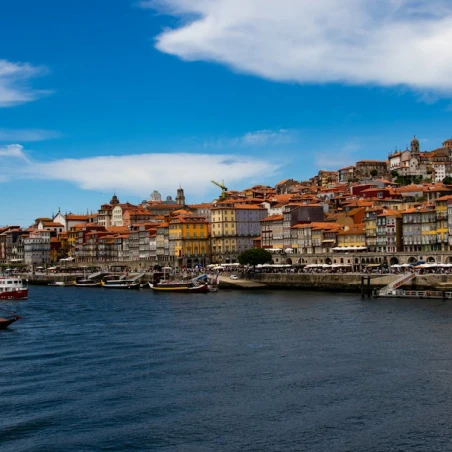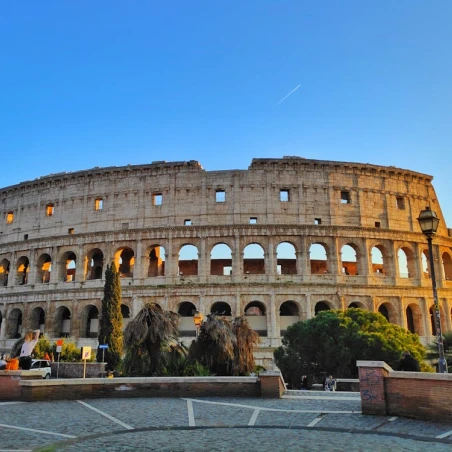Table of Contents:
- What are the main factors that determine the cost of a Maldives trip?
- How much do flights to the Maldives cost?
- What are the accommodation costs in the Maldives?
- What is the cost difference between resorts and local guesthouses?
- How much do overwater bungalows cost?
- How much does inter-island transportation cost?
- What is the price of a seaplane transfer?
- What is the price of a speedboat or ferry?
- What is the average cost of food and drinks?
- How much should you budget for activities and excursions?
- How does the travel season affect your vacation cost?
- What are the hidden costs and taxes to consider?
- How can you stay connected with an eSIM in the Maldives?
- What is a sample weekly budget for a Maldives trip?
- Top 5 money-saving hacks for the Maldives
What are the main factors that determine the cost of a Maldives trip?
The total cost of your Maldives vacation is determined by four primary factors:
- Flight tickets
- Accommodation
- Inter-island transportation
- Seasonality
Where you stay is one of the biggest expenses, with options from budget guesthouses on local islands to ultra-luxury resorts. Inter-island transport by speedboat or seaplane also adds a big chunk to your budget, especially for remote locations. Put it all together, and believe it or not, a one-week trip for two can swing from a budget-friendly $1,700 to a luxurious $15,000 or more.
How much do flights to the Maldives cost?
International flights to Velana International Airport (MLE) will account for a significant portion of your expenses and vary widely in cost. Round-trip economy tickets from the US typically range from $1,000 to $1,900, with prices often varying based on the departure city; for instance, flights from West Coast hubs may be on the lower end of this range. Flights from closer locations like India can be as low as $350 to $550.
Booking 2-3 months in advance helps reduce this expense. For the best value, flexibility with your travel dates can help you find lower prices during the shoulder or off-seasons. You can also save money by using credit card points and opting for flights with layovers instead of direct routes, which can significantly lower the price.
What are the accommodation costs in the Maldives?
Where you choose to stay will be the single biggest factor in your Maldives budget, with substantial differences in nightly rates.
- For budget travel, guesthouses on local islands offer an authentic experience and cost between $50 and $150 per night.
- Mid-range hotels and resorts are priced from $150 to $600 per night.
- For luxury travel, private island resorts generally range from $600 to $1,500 per night, while iconic overwater bungalows can exceed $6,000 per night.
What is the cost difference between resorts and local guesthouses?
Guesthouses on local islands offer the most budget-friendly stay, with nightly rates from $50 to $150. On the other hand, resorts occupy private islands and provide luxury experiences with prices starting at $150 and soaring to over $6,000 per night. Choosing a guesthouse offers more than just savings. It’s a chance to experience real Maldivian culture and access to affordable local dining, an experience that's often more direct and immersive than the curated excursions offered by many resorts.
How much do overwater bungalows cost?
The iconic overwater bungalow is the ultimate Maldivian luxury, but it comes with a premium price tag. Nightly rates start at $600 and can exceed $6,000 at the most luxurious resorts. This higher cost reflects the engineering challenge of building these stable, luxurious villas. You're also paying for an incredible experience: the feeling of stepping from your private deck directly into a turquoise lagoon. And honestly, this unique appeal makes them a popular honeymoon option.
How much does inter-island transportation cost?
Getting between islands is a big, and often required, expense you can't avoid. The cost depends on your travel mode and distance from Velana International Airport (MLE) in Male. For resorts located far from the airport, seaplanes are a common transfer option. They offer incredible views but at a high price, with one-way transfers typically ranging from $250 to $600. Speedboats, often required for resorts closer to Male, are a mid-range choice with round-trip transfers costing between $120 and $280 per person.
The most budget-friendly option is the public ferry system, which connects local islands for under $15 per trip. Keep in mind, these operate on limited schedules and don't service private resorts. Your island choice directly impacts this cost. Most resorts require you to use their specified transfer service, adding hundreds of dollars per person to your bill.
What is the price of a seaplane transfer?
A seaplane transfer, which is often mandatory for remote resorts, costs between $250 and $600 one-way. You're paying for the specialized service and the unforgettable aerial views of the atolls. If you ask me, it's an experience that often justifies the cost.
What is the price of a speedboat or ferry?
For budget travel to local islands, public ferries are the most economical option, with a one-way trip costing under $15. Speedboat transfers, which are common for resorts near Male, are pricier, costing between $120 and $280 for a round trip. While these are incredibly cheap, you'll sacrifice the convenience of the more frequent, flexible schedules offered by private speedboats.
What is the average cost of food and drinks?
Food costs in the Maldives vary enormously depending on your dining choices and can really affect your budget. On local islands, you can enjoy authentic Maldivian cuisine for under $15 per person per meal. At resorts, however, dining is a lot more expensive. A meal at a mid-range resort restaurant usually costs between $30 and $90 per person, while fine dining can exceed $150.
Alcoholic beverages are only available at resorts and on safari boats. The government heavily taxes them, and they can add a lot to your bill, with individual drinks often costing $15 to $30. To keep these costs in check, many resorts offer meal plans. All-inclusive packages often provide the best value by bundling meals and drinks into a single price.
How much should you budget for activities and excursions?
Don't forget to budget for activities, which can range from free explorations to pricey guided tours. To see the colorful coral reefs and fish, guided snorkeling or diving excursions on average cost between $60 and $220 per person. Popular island hopping tours range from $120 to $260 for a full-day trip, while more luxurious experiences like spa treatments at resorts start at around $80.
For budget-friendly options, visit local islands. You can arrange cultural experiences for under $60 or explore for free using the public ferry. Joining group tours is another great way to save money on adventures.
How does the travel season affect your vacation cost?
Choosing the right travel season can dramatically impact your budget, potentially cutting your accommodation bill by as much as half. Prices for flights and accommodation fluctuate significantly throughout the year. The peak season—the dry period from December to March—offers ideal weather but comes with the highest costs. Prices can even double during major holidays. On the other hand, the off-season from May to November provides the best value. During this period, you can find accommodation rates that're 30-50% lower, though you should expect more rain.
The shoulder seasons, covering April to May and September to November, offer a great compromise between good weather and better prices.
What are the hidden costs and taxes to consider?
When calculating your budget, don't forget to factor in hidden costs. This is a big one, so pay close attention. Advertised prices often exclude mandatory fees. The most substantial additions are taxes and service charges, which can increase your final bill by 26-28%. These usually consist of a 10% service charge and a 16% Goods and Services Tax (GST). Additionally, you'll have to pay a Green Tax of $6 per person per night.
Another major expense to consider is alcohol. The government taxes it heavily, and it's exclusively available at resorts, with a single drink often costing $15 to $30. Other potential hidden costs include charges for Wi-Fi, upcharges for premium excursions not covered in packages, and fees for late checkouts.
How can you stay connected with an eSIM in the Maldives?
Staying connected in the Maldives is simple, and modern tech like an eSIM makes it even easier. An eSIM provides immediate mobile data on arrival, letting you skip the search for a local SIM card and avoid high roaming fees. For seamless connectivity upon arrival, a dedicated eSIM for the Maldives provides traveler-focused plans, such as a 6 GB option for 15 days. Most resorts and some guesthouses offer Wi-Fi. But, an eSIM makes sure you always have a reliable connection, and that's especially useful when exploring local islands or during excursions where public Wi-Fi is unavailable.
What is a sample weekly budget for a Maldives trip?
A sample weekly budget for a couple's trip to the Maldives depends heavily on your travel style. Here’s a breakdown of what to expect for budget, mid-range, and luxury vacations.
| Travel Style | Estimated Weekly Cost (Couple) | Includes |
|---|---|---|
| Budget | $1,700 – $3,000 | Guesthouse accommodation on local islands, meals at local cafes, and transport via public ferries. Daily expenses around $50–$100 per person. |
| Mid-Range | $4,000 – $7,000 | Mid-range resorts (beachfront rooms), a mix of dining options, and some guided excursions. Many resorts offer half-board or all-inclusive plans. |
| Luxury | $7,000 – $15,000+ | 5-star overwater bungalows, fine dining, seaplane transfers, alcoholic beverages, and exclusive private activities. |
Top 5 money-saving hacks for the Maldives
While the Maldives is synonymous with luxury, strategic planning can significantly lower your expenses. These five strategies offer the greatest impact on your final budget:
- Travel during the off-season: Visit between May and November to find accommodation and flight rates that're 30-50% lower than during the peak season.
- Staying on a local island: Choose guesthouses over private resorts to cut accommodation costs dramatically. Nightly rates can be as low as $50-$150.
- Using public transport: Opt for the public ferry system for inter-island travel. A trip costs under $15, saving you hundreds compared to private speedboats or seaplanes.
- Eat like a local: Dine at cafes on local islands where authentic meals often cost less than $15 per person, a fraction of resort restaurant prices.
- Leveraging points and miles: Use credit card rewards points or airline miles to book flights and even some hotel stays, to cut down on your largest upfront expenses.
Sources
Posts you might also like




